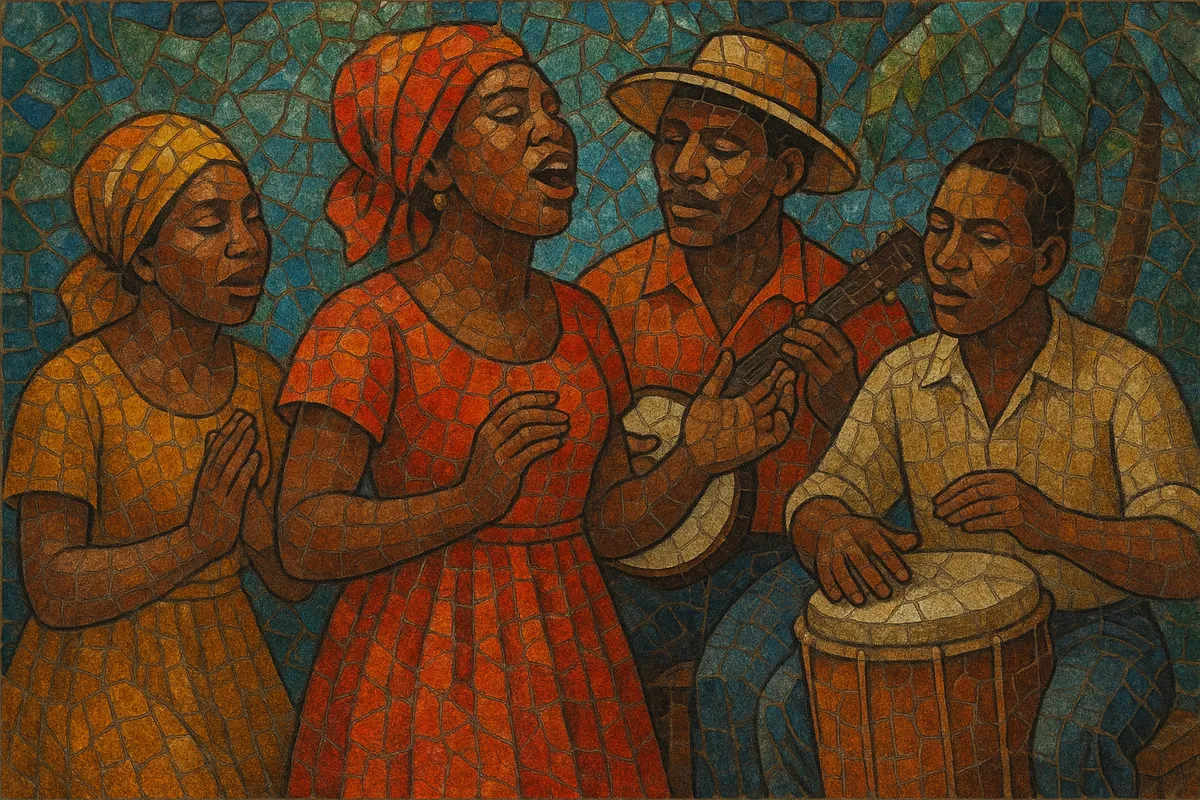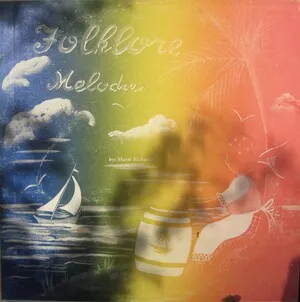
Virgin Islander cariso is a traditional song genre from the U.S. Virgin Islands, rooted in the plantation-era chantwell tradition. It features topical, often satirical storytelling delivered in call-and-response between a lead singer and a chorus, historically performed by women.
Cariso melodies are strophic and memorable, set to lively duple or lilting 6/8 rhythms. Performances were once accompanied primarily by handclaps and drums (bamboula-style), and later also by the "scratch band" (quelbe) palette—squash/güiro, triangle, banjo/banjolin or guitar, flute or fiddle, and light percussion. Lyrics are in Virgin Islands English Creole (Crucian dialects), mixing humor, social commentary, and community memory.
As an older Afro-Caribbean vocal form, cariso stands alongside related Caribbean chantwell practices and is a recognized forerunner to the Virgin Islands’ quelbe as well as a cousin to Trinidadian cariso/kaiso. It functions as a vehicle for communal identity, oral history, and dance.
Cariso emerged in the Danish West Indies (now the U.S. Virgin Islands) during the 1800s among Afro-Caribbean communities. Enslaved and later emancipated Virgin Islanders adapted West and Central African call-and-response singing and work-song poetics to local social life, festivals, and yard gatherings. The lead singer (chantwell) improvised or semi-improvised verses that narrated news, expressed grievances, praised, or teased, while the chorus responded with a fixed refrain.
Early performances relied on voice, handclaps, and drum-and-dance practices related to bamboula/bélé. As string and small percussion ensembles became common, cariso was sung with scratch-band instrumentation that later defined quelbe: squash (güiro), triangle, banjo/banjolin, fiddle or flute, guitar, and light drums. Cariso was heard at Christmas festivities, neighborhood events, wakes, and other communal occasions, reinforcing its role as social commentary and oral memory.
Cariso belongs to a wider Caribbean chantwell continuum (akin to Trinidadian cariso/kaiso), where topical song led by a virtuoso singer anchors dance and festivity. In the Virgin Islands, this lineage feeds directly into quelbe, the territory’s official folk music. Through these links, the cariso aesthetic—satirical verses over infectious dance rhythms—contributed to the regional current that also shaped later popular styles in the Caribbean.
While modern entertainment options and commercial styles shifted public taste, cariso persisted within heritage ensembles, school programs, and community celebrations. Contemporary musicians often integrate cariso repertoire or style markers (call-and-response, topical verses, scratch-band textures) into quelbe performances, ensuring transmission and revival as part of the islands’ cultural patrimony.


